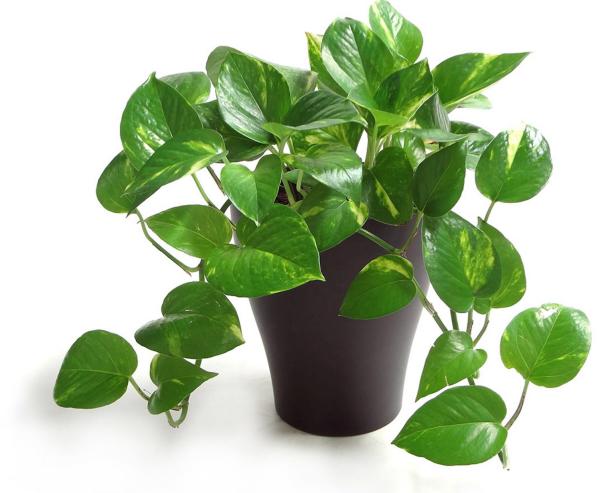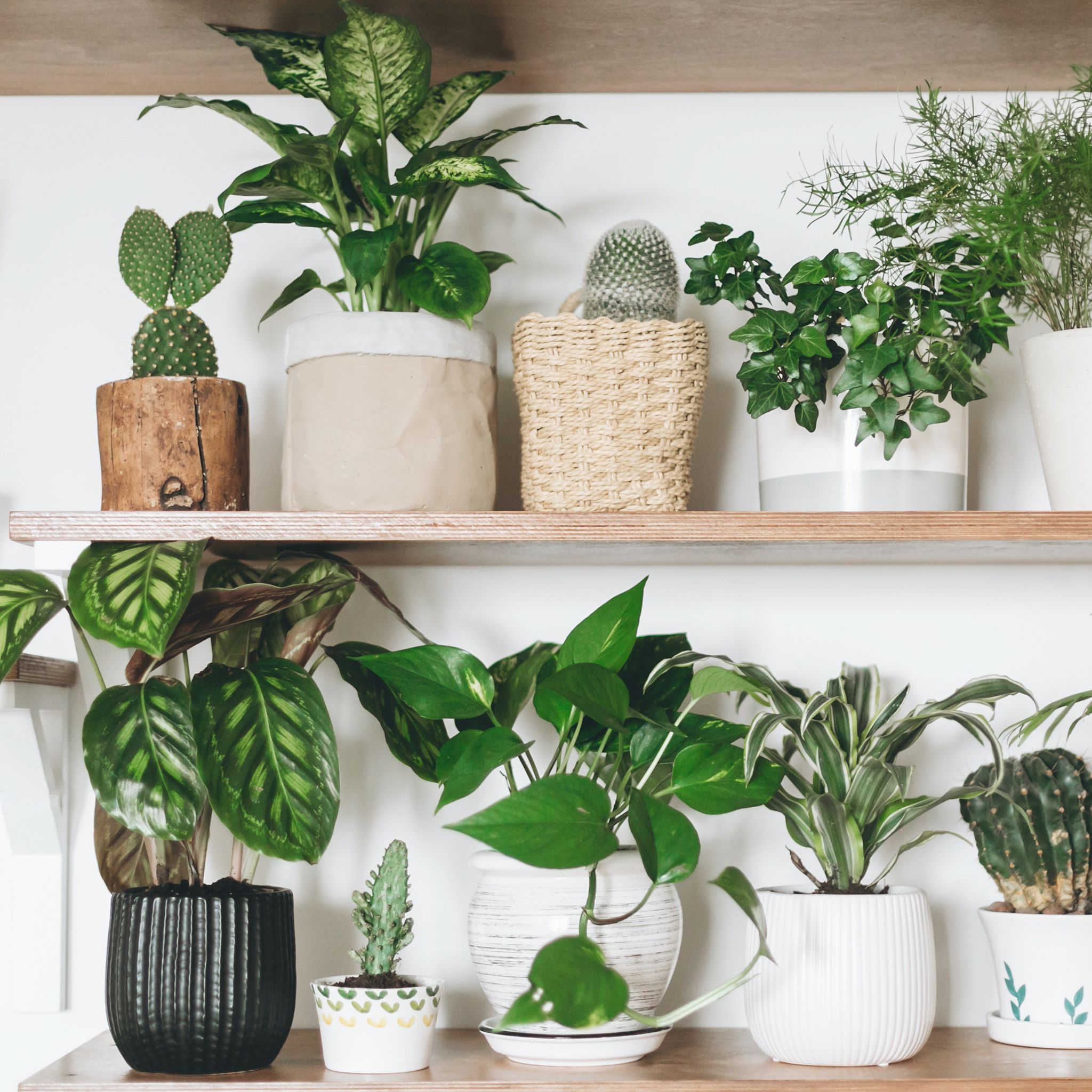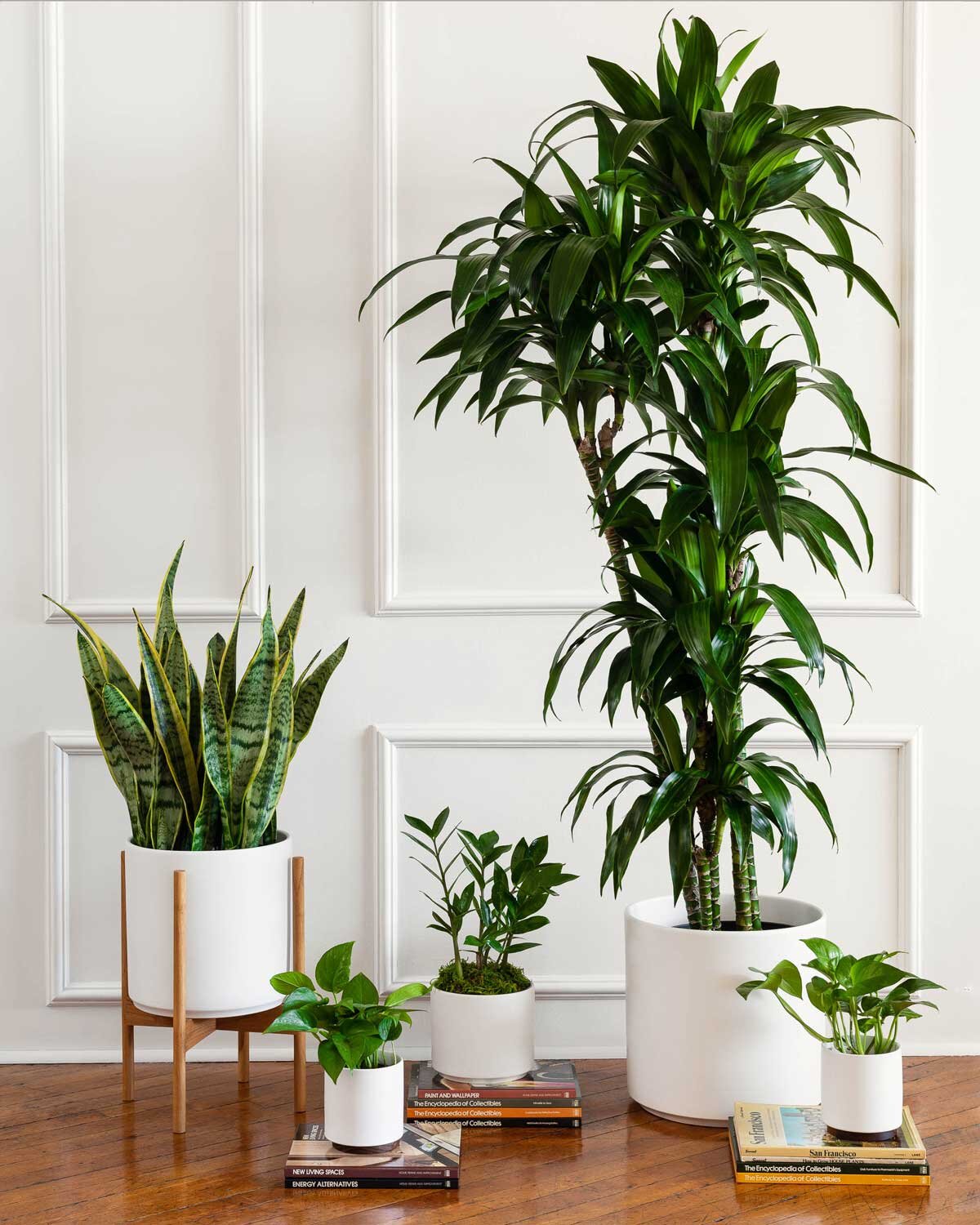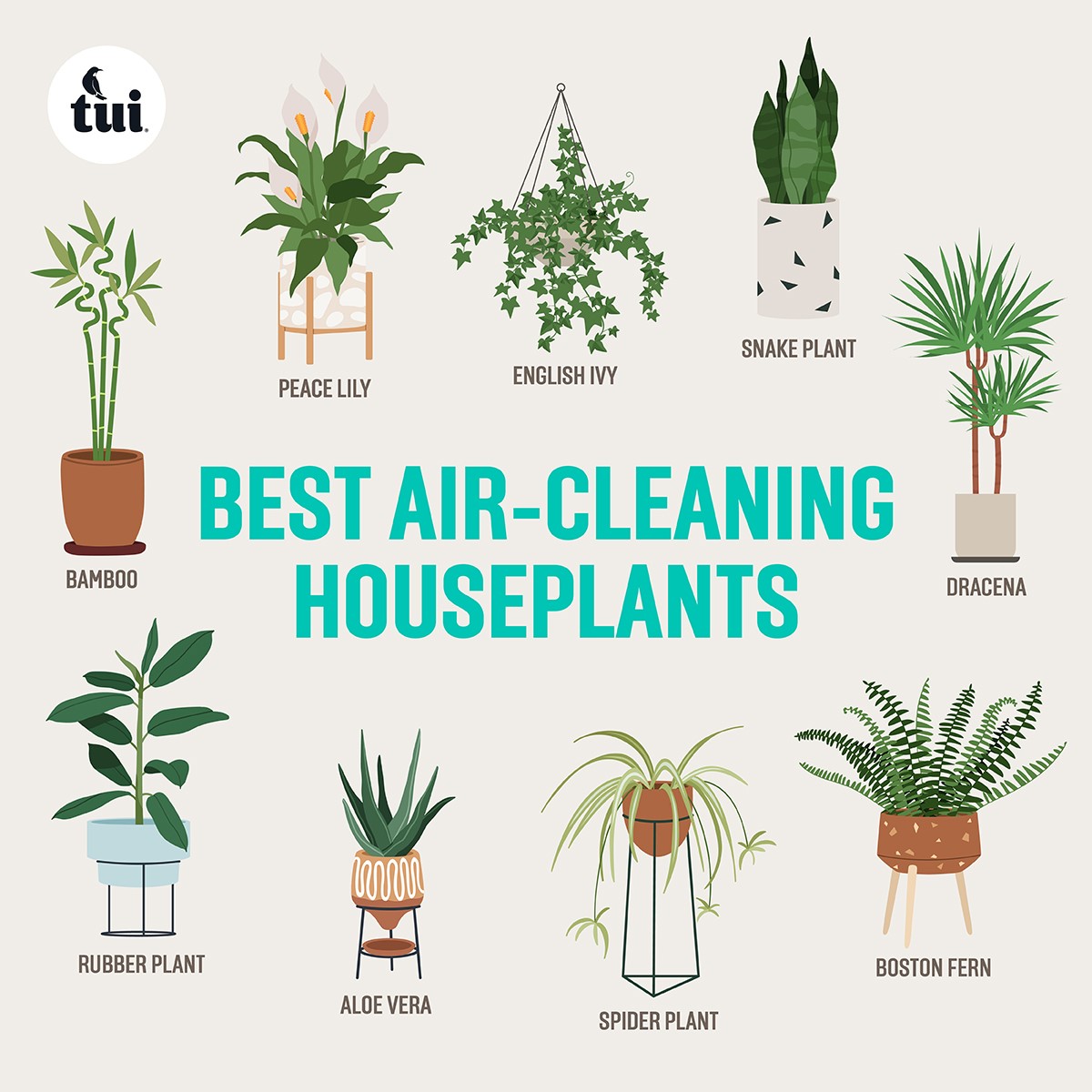The best plants to purify air include the Snake Plant, Spider Plant, and Peace Lily. These plants effectively remove toxins.
Indoor air pollution is a growing concern, affecting our health and well-being. Houseplants provide a natural solution, improving air quality while adding aesthetic value. The Snake Plant, known for its hardy nature, filters formaldehyde and benzene. The Spider Plant, easy to grow, removes carbon monoxide and xylene.
The Peace Lily, with its beautiful white blooms, eliminates mold spores and trichloroethylene. Integrating these plants into your home or office not only purifies the air but also enhances the environment. They are low-maintenance and thrive in various conditions, making them ideal for busy lifestyles.

Credit: www.hgtv.com
Spider Plant
The Spider Plant is a popular choice for indoor greenery. Known for its arching leaves and easy maintenance, it’s perfect for beginners. This plant not only adds beauty but also purifies the air.
Air Purifying Benefits
The Spider Plant excels at removing harmful toxins. It can filter out formaldehyde, xylene, and toluene from the air. NASA’s Clean Air Study found it to be highly effective. This makes it ideal for improving indoor air quality.
| Toxin | Effect on Health |
|---|---|
| Formaldehyde | Can cause eye and throat irritation |
| Xylene | Can cause headaches and dizziness |
| Toluene | Can cause neurological harm |
Care Tips
The Spider Plant is easy to care for. Follow these tips to keep it healthy:
- Light: Prefers bright, indirect light.
- Water: Keep the soil moist, but not soggy.
- Temperature: Thrives in temperatures between 60-75°F.
- Humidity: Prefers moderate humidity levels.
- Soil: Use well-draining potting soil.
- Fertilizer: Feed monthly during the growing season.
Place the Spider Plant in a spot where it can get indirect sunlight. Rotate the plant occasionally to ensure even growth. If the tips of the leaves turn brown, check the water quality and humidity levels. Avoid overwatering to prevent root rot.
Snake Plant
The Snake Plant, also known as Sansevieria or Mother-in-Law’s Tongue, is a popular houseplant. It is renowned for its air-purifying abilities and easy maintenance. This plant can thrive in various indoor conditions, making it a favorite among plant enthusiasts.
Air Quality Improvement
The Snake Plant is an excellent air purifier. It effectively removes toxins such as formaldehyde, benzene, and trichloroethylene from the air. According to NASA’s Clean Air Study, it is one of the best plants for improving indoor air quality.
Unlike most plants, the Snake Plant converts CO2 into oxygen at night. This makes it ideal for bedrooms, as it can improve sleep quality.
Maintenance Guide
The Snake Plant is low-maintenance and perfect for beginners.
| Care Aspect | Details |
|---|---|
| Watering | Water every 2-4 weeks; let soil dry between waterings. |
| Light | Thrives in indirect sunlight but can tolerate low light. |
| Soil | Use well-draining soil; cactus mix is ideal. |
| Temperature | Prefers temperatures between 60-85°F (16-29°C). |
Snake Plants are resilient and can withstand neglect. They are resistant to pests and diseases. This makes them a durable choice for any home.
To keep your plant healthy, occasionally wipe the leaves with a damp cloth. This removes dust and allows the plant to breathe better.
Peace Lily
The Peace Lily is a popular choice for indoor plants due to its air-purifying abilities and elegant appearance. This beautiful plant not only enhances your home decor but also improves indoor air quality by removing toxins.
Purification Capabilities
The Peace Lily is known for its exceptional ability to purify air. It absorbs harmful toxins like:
- Formaldehyde
- Benzene
- Trichloroethylene
- Ammonia
NASA’s Clean Air Study found that Peace Lilies can also increase humidity by up to 5%. This helps reduce allergens and dust in the air.
Growing Conditions
Peace Lilies thrive in low to medium light conditions. Direct sunlight can harm the leaves. Place them in a shady spot for best results.
They prefer a consistent watering schedule. Keep the soil moist but not soggy. Overwatering can cause root rot.
| Aspect | Ideal Condition |
|---|---|
| Light | Low to Medium |
| Water | Moist but not Soggy |
| Temperature | 65-80°F (18-27°C) |
Peace Lilies also benefit from occasional misting to maintain humidity. They are sensitive to cold drafts and sudden temperature changes. Ensure they are in a stable environment.
Aloe Vera
Aloe Vera is one of the best plants to purify air. This succulent plant not only beautifies your home but also offers numerous health benefits. Let’s explore why Aloe Vera is a must-have for your indoor garden.
Health Benefits
Aloe Vera is packed with health benefits that go beyond air purification.
- Air Purification: It removes toxins like formaldehyde and benzene from the air.
- Healing Properties: Aloe Vera gel is excellent for treating cuts and burns.
- Boosts Immunity: It has antioxidants that help improve your immune system.
- Improves Skin Health: Aloe Vera can moisturize and heal your skin.
Ideal Growing Environment
Aloe Vera thrives in specific conditions. Here’s what you need to know:
| Factor | Requirement |
|---|---|
| Light | Bright, indirect sunlight |
| Water | Water deeply but infrequently |
| Soil | Well-draining soil, like cactus mix |
| Temperature | Room temperature, between 60-75°F (15-24°C) |
With these conditions, your Aloe Vera plant will flourish. It will continue to purify the air and offer its many health benefits.
Bamboo Palm
The Bamboo Palm is a popular indoor plant known for its beauty and air-purifying abilities. This tropical plant not only enhances your home decor but also improves indoor air quality.
Air Cleaning Properties
The Bamboo Palm, also known as Chamaedorea seifrizii, is an excellent air purifier. It is especially effective at removing harmful toxins from the air.
- Removes formaldehyde
- Eliminates benzene
- Reduces trichloroethylene
These toxins can come from furniture, cleaning products, and paints. By absorbing these chemicals, the Bamboo Palm helps to create a healthier living environment.
Care Instructions
Taking care of a Bamboo Palm is simple. Follow these steps to ensure your plant thrives:
| Care Aspect | Details |
|---|---|
| Light | Prefers bright, indirect sunlight |
| Water | Keep the soil slightly moist, but not soggy |
| Humidity | Enjoys high humidity levels |
| Temperature | Thrives in temperatures between 65°F and 80°F |
| Soil | Use well-draining potting mix |
Here are some additional tips:
- Fertilize monthly during the growing season.
- Prune dead leaves to keep the plant healthy.
- Repot every 2-3 years to refresh the soil.
By following these care instructions, your Bamboo Palm will flourish and continue to purify the air in your home.

Credit: www.countryliving.com
English Ivy
English Ivy is a popular indoor plant known for its ability to purify air. This plant is not only beautiful but also effective in removing toxins.
Pollutant Removal
English Ivy can effectively remove various indoor pollutants. This includes:
- Formaldehyde – Found in household products and building materials.
- Benzene – Present in tobacco smoke, paints, and solvents.
- Trichloroethylene – Used in industrial processes and household cleaners.
- Xylene – Found in paint thinners and adhesives.
Having English Ivy at home can significantly improve air quality. It is particularly useful for people with allergies or asthma.
Growth Requirements
English Ivy is easy to care for and can thrive in various conditions. Here are its basic growth requirements:
| Requirement | Details |
|---|---|
| Light | Prefers bright, indirect light but can tolerate low light. |
| Water | Keep soil evenly moist. Avoid overwatering to prevent root rot. |
| Temperature | Thrives in temperatures between 50-70°F (10-21°C). |
| Humidity | Prefers higher humidity levels but can adapt to average household humidity. |
| Soil | Well-draining potting mix is ideal. |
Following these guidelines will ensure your English Ivy remains healthy and vibrant. This will help it effectively purify the air in your home.

Credit: blog.leonandgeorge.com
Frequently Asked Questions
Which Plant Purifies The Air The Most?
The Spider Plant is highly effective at purifying air. It removes pollutants like formaldehyde, xylene, and toluene.
What Plant Removes 78% Of Airborne Mold?
The English ivy plant removes 78% of airborne mold. It’s effective and improves indoor air quality. Add English ivy to your home for healthier air.
Do Air-purifying Plants Really Work?
Yes, air-purifying plants can help improve indoor air quality. They remove toxins and increase oxygen levels. Popular choices include spider plants, peace lilies, and snake plants. For best results, use multiple plants in different rooms.
What Plants Are Good For Indoor Air Quality?
Spider plants, peace lilies, snake plants, and Boston ferns improve indoor air quality. These plants remove toxins and increase oxygen.
Conclusion
Breathing cleaner air begins with the right plants. Choose spider plants, peace lilies, and snake plants to enhance your home’s air quality. These plants are easy to maintain and offer numerous health benefits. Start your journey towards fresher indoor air today with these green companions.
Make your home a healthier place to live.

My mission is to help you bring the beauty of nature indoors with expert advice, detailed plant care guides, and creative design ideas.





Leave a Reply